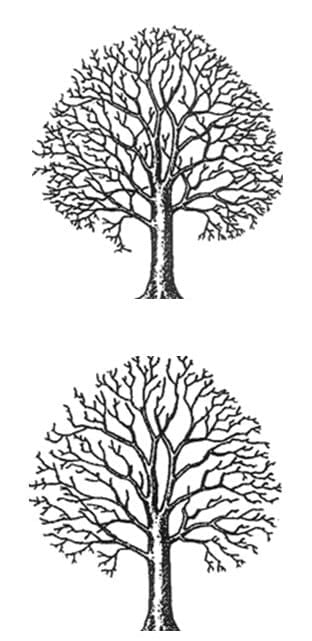Crown thinning
Crown thinning is the process in which a number of secondary branches are removed to produce a balanced crown, without altering the general size or shape of the tree. It results in higher levels of light passing through the canopy, in turn reducing shading. It also reduces the sail effect of the crown and in turn reducing the wind loading upon the limbs of the tree. The removal of weak, crossing or duplicated branches.
Crown thinning is technique applied mainly to broad-leaved trees and usually applied pruning fruit trees. The extent of these works is specified as a percentage. i.e 10% crown thin. Tree thinning is a more specialist tree pruning practices which produces more subtle result than a crown reduction.
The main benefits of crown thinning
Tree thinning results in higher levels of light passing through the canopy, in turn reducing shading.
Crown thinning also reduces the sail effect of the trees limbs allowing the wind to pass through the canopy, reducing limb frailer if carried out properly.
Thinning reduces overall weight and with the removal of dead, weak, crossing or duplicated branches produces a naturally healthier tree.
If you have any questions about crown thinning or anything else please contact us. We will be more than happy to help.

